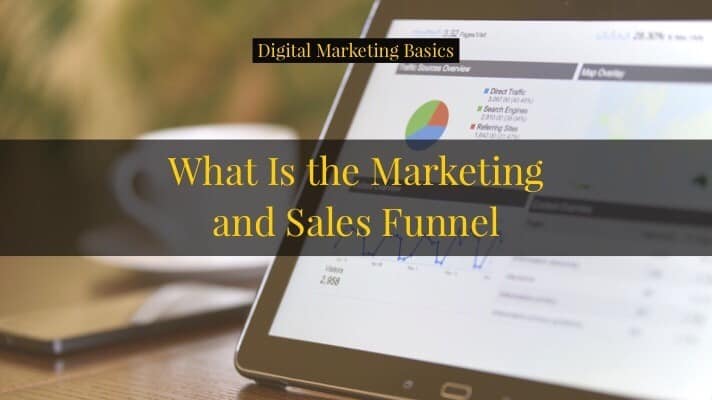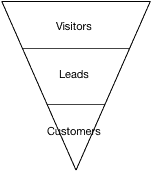Have you ever tried selling something? What was the first thing you did? Who were the first few people you tried selling to?
Your family. Your close friends. Maybe even your relatives.
Then you posted on your social media accounts to go beyond your close circle.
You created Facebook page for your product and started posting and selling there.
Then, nobody seems to respond to your posts except your family and friends.
Sure, you get likes every once in a while. But you still haven’t sold anything outside your own circle.
You’ve hit a wall.
After going through your list of potential buyers (friends and family), you don’t have anyone else to sell to.
But you believe in your product so much. You don’t want to just give up. So, you research online and find that advertising might solve your problem.
You run some ads on Facebook. But after a couple of days, you still haven’t made much progress.
Doubts creep in.
You start thinking that maybe your product isn’t that good. Maybe you’re not meant to sell. You’re just not good at it.
You’re not alone.
Majority of small and medium businesses are in the same situation as you. While there are revenues coming in, they aren’t enough to warrant hiring new people or investing in other activities.
A lot of big brands also started out like that. Apple started selling to their family and friends. HP, which also started in their garage, sold to their inner circle first.
But they found a way to get more customers to grow their revenues. To scale. To become who they are today.
What they did differently
What the successful brands did differently is that they applied a holistic strategy — one that allowed them to continuously sell and grow their business.
They became successful because, in one form or another, they used a holistic strategy and not just string together a couple of activities.
When it comes to digital marketing, that holistic strategy means having a way to fill your marketing and sales funnel automatically.
Let me explain that below.
The Marketing and Sales Funnel
Your marketing and sales funnel, or simply funnel, is a visual framework that allows you to see how every activity ties in together, and what metrics you should keep an eye out for.
The funnel is composed of 3 parts: prospects, leads, and customers.
1. Prospects
These are people who may or may not be interested.
Following the story a while ago, these are people whom you spoke with initially to share more about your product.
In digital marketing, these usually comprise your website’s visitors and engaged audience on social media.
Activities you need to focus on at this stage should convert these prospects/visitors to the next stage.
2. Leads
Leads in digital marketing are people who are somewhat interested, more engaged, may or may not be ready to buy now.
After your initial conversation, you’ll find out if they are the right fit for you or not. You learn more about them, what they like and dislike. You get some feedback so you can further improve your product, messaging, and approach to selling.
The key indicator for leads (vs prospects) is that these group of people gave their contact information to you. You have the ability (and hopefully, permission) to reach out to them about what you do and what you sell. You know a little bit about them through your interactions with them.
The activities you should be focusing here are to nurture these people — through education — to buy from you later on.
3. Customers
These are people who have bought from you. People who were willing to trade in their hard-earned money for your product (or service).
They didn’t do it because you’re the one selling it (maybe if it’s your mom); rather, they bought from you because they believed in you and how it can benefit their life.
To be successful in business today, you don’t end a relationship when someone pays you. You continue this relationship, get to know them more, ask for feedback. You can ask your best customers for referrals, give them exclusive perks for being loyal, and many more.
How Does the a Holistic Strategy Fit in with the Funnel
As you noticed, the typical journey of an entrepreneur moves from talking to the prospects, to leads, then to customers. This is the same for other big, successful businesses as well.
The only difference is that they don’t stop doing one activity in exchange for the next.
A holistic strategy allows you to create a sustainable business.
The Problem: Non-scalable Activities
Let’s go back to our story earlier. When you first got your product, you were so excited. You believed in it so much. You started selling to your inner circle. Some bought. Some didn’t. But that didn’t stop you.
You went beyond your inner circle. You reached out to your acquaintances. You spoke with people you don’t know, started running some ads, and got a few inquiries.
While this approach goes through the funnel (prospecting, lead nurturing, closing), whenever you switch to the next activity, you stop doing the other one.
And that’s what’s hurting you and your business.
You didn’t spend time on activities that are sustainable. Those activities that do the hard work for you, even if you’re taking a vacation.
The Solution: Scalable Activities
Scalable activities in digital marketing are things you do that yield results now, tomorrow, and years into the future.
Compare this with non-scalable things, where once you stop doing them, results stop coming in.
Typically, advertising is a non-scalable activity. The moment you stop pouring in money, results will stop coming in. A great example of a scalable activity is blogging or content creation.
Below are steps you can take to make sure that you invest in scalable activities, while at the same time, bring you quick wins as well.
1. Start blogging and create content
This activity supports the entire funnel — from prospects, to leads, to customers. You can create content to attract people who don’t know you, provide more information about your product, answer FAQs, and provide user guides.
Use a content pillar approach when creating content. It’s an efficient and effective way to repurpose your content. And don’t forget to share them on social media and in your email list.
If you don’t have any content to attract new people, engage with your audience, and help existing customers, where would this leave you?
You’ll plateau quickly, just like in our story.
Why?
Without content targeted to the different stages of the funnel, the only thing you have left is your product. And when you’re left with something you can’t change, you start discounting just to be able to sell. Lower and lower. Until you don’t make a profit anymore.
In addition, when you lower your prices, the only people who will see it and/or take notice of it are already the people who know you. Remember the funnel? If you don’t fill the top of the funnel with new prospects, you won’t get new leads and customers. What will end up happening is your existing customers will see the discounts. They will switch over to the lower price and, eventually, you will lose all your margins.
Finally, look at your business from a larger perspective. There are a lot of people who don’t know you, care about you and your product. If the only thing you post on your social media accounts are how awesome your product is, eventually, no one’s going to listen to you anymore.
As a sidetone, this is one of the reasons one organic posts by Pages on Facebook keeps declining. Marketers keep abusing the platform. Users get irritated. This leads to a bad experience for them. And Facebook doesn’t want that.
The funnel has stood the test of time for a reason — you keep filling the top with new prospects. This will give you the chance to test your messaging, get more feedback, and more importantly, grow your business.
Your strategy has to consist of address the 3 parts — how to get more prospects/visitors, how to get more leads, and how to get more customers. Jumping from one stage to another or simply focusing on one is ineffective.
2. Create landing pages
Landing pages allow you to capture contact information. And from our definition above, that’s the way you generate leads for your business. It’s composed of two parts: (1) a copy that explains what you’re offering and (2) a form that people fill-in.
You can use this across the entire funnel as well. You just change the contents of it depending on your goal.
For example, you can have a white paper on a specific topic that you can use as your lead generation offer. Here’s an example of me doing just that.

Most businesses only have a contact us page as their sole landing page. This is also the reason why they aren’t growing.
Landing pages typically have a 1% conversion rate. For every 100 visits you get to your contact us page, you only convert 1 of them. How often do you think people visit your contact us page? Now imagine the amount of traffic you need to reach your goals?
So, what do you need to do? Create more marketing offers and put them on landing pages. Distribute them on social media, add calls-to-action (CTAs) all over your website like the example I have above.
3. Setup lead nurturing campaigns
Lead nurturing is a marketing activity that moves a lead from one stage to another. It does this by sending (mostly) automated content usually though email that educates the lead about the company, its products/services, and how it can benefit them.
Lead nurturing campaigns always add value.
The only way to add value is to be helpful. Being helpful is not about talking about your products and your promos. It’s all about the customers and how you can help make their lives better.
If you’re selling computers, you don’t focus on the specs like the memory and screen size. Apple is a great example of a company that focuses on the benefits you get when you buy one of their Macs.
There are two problems with creating lead nurturing campaigns. First, you need to know the product/service in detail in order to craft the correct sequence and copy.
Next is it takes hard work. You need content — the helpful and educational type. Unfortunately a lot of marketers don’t invest in knowing what they are selling.
This is the main reason why the only emails that gets sent out are promotional emails and discounting. There’s not even an ounce of copy except for variations of “buy one get one” or “hurry, we have a sale that ends on (insert date here).”
So, What Are You Going to Do Next?
Whether you are new in digital marketing, or an expert, it’s essential that you apply a holistic digital marketing strategy. While you may choose to “focus” on one aspect of the funnel, the fact that you know that there’s a next part in the strategy will help you develop better campaigns.
By using a holistic digital marketing strategy, you can avoid problems most organizations are facing today — declining sales despite tons of promotions. If you have a way to continually fill the top of your funnel, convert them into leads, and nurture them into customers, results will come in.
And as a bonus, you’ll know which parts of your funnel is not working, then find a way to fix it!
Are you using a holistic digital marketing strategy in your organization? Let me know in the comments below.


